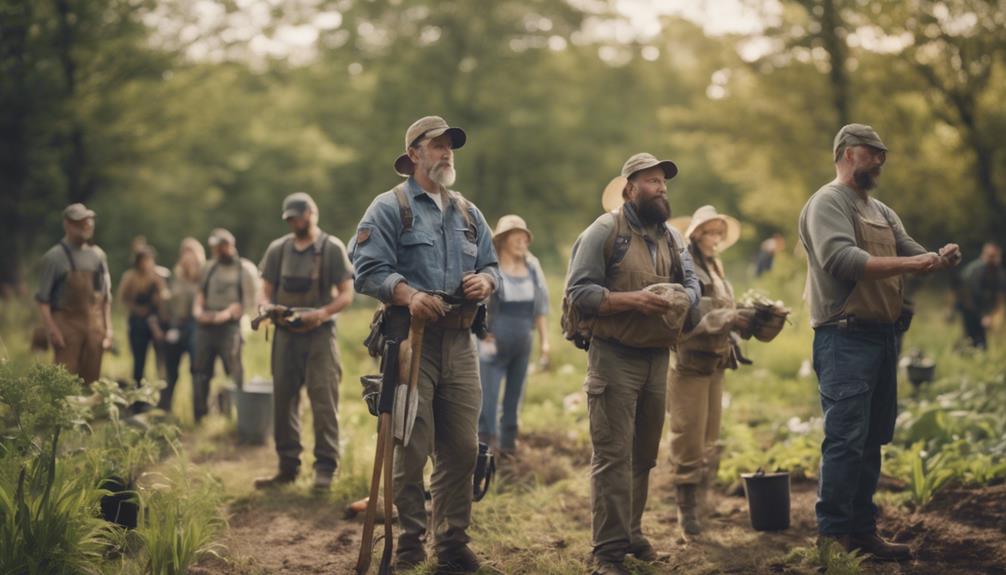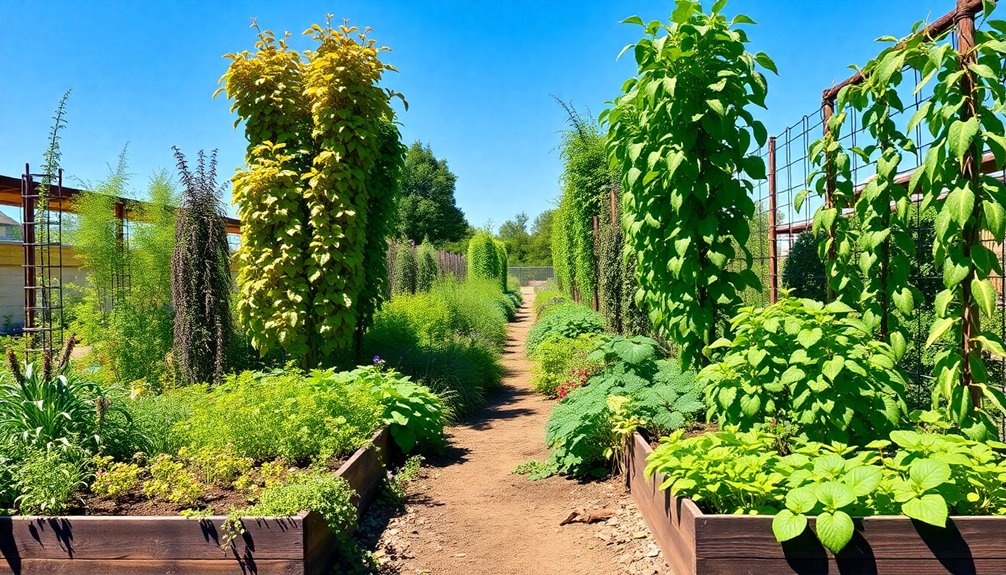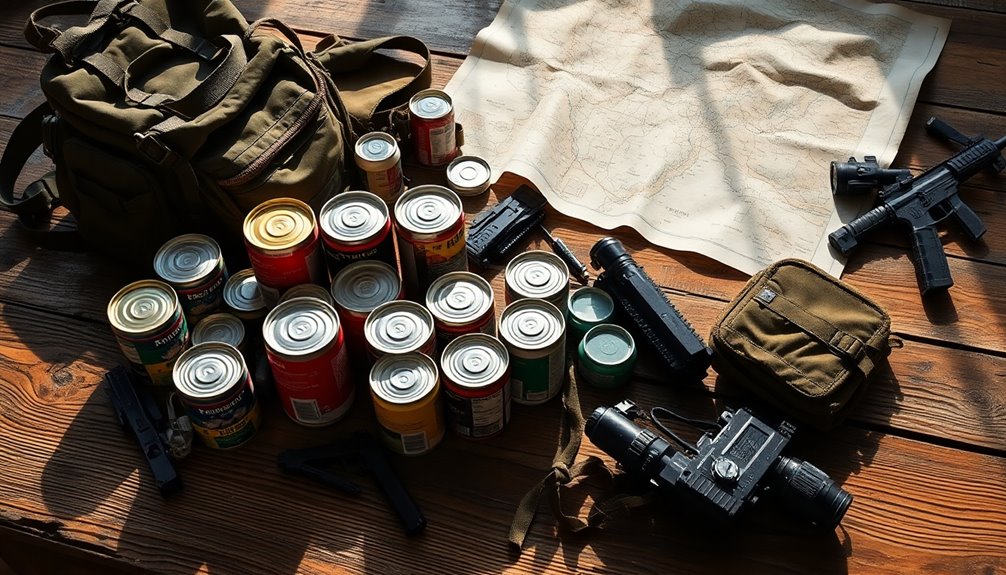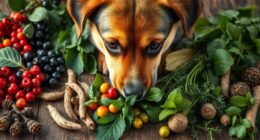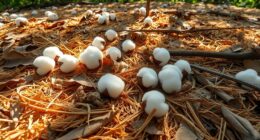Survivalists should focus on a combination of small and larger livestock for ideal sustenance. Essential small animals include rabbits, which reproduce quickly and provide a steady meat supply, and ducks, which offer both eggs and meat. Goats are versatile, supplying milk and meat while also maintaining land. For larger livestock, cattle provide substantial meat and milk, while horses can serve as invaluable transport. Proper planning for resource allocation, health management, and sustainable breeding practices is vital. This strategic approach will enhance food security, resilience, and self-sufficiency in a crisis. Further insights on effective livestock management await.
Key Takeaways
- Rabbits are ideal for survivalists due to their rapid reproduction and minimal feed requirements, providing a steady meat supply.
- Ducks are adaptable, thriving in small spaces while offering both meat and eggs for a consistent food source.
- Goats provide versatile resources, including milk and meat, while also aiding in land management and sustainability.
- Cattle offer substantial meat and milk, ensuring rich protein intake and enhancing overall food security.
Importance of Survival Livestock
In the face of potential disasters, the inclusion of survival livestock becomes essential for ensuring self-sufficiency and mitigating the risks associated with depleting natural resources.
Relying solely on hunting, fishing, or foraging can lead to starvation, particularly as these resources diminish over time. While outdoor survival skills can enhance one's chances, they are not infallible.
Urban settings often limit the types of livestock one can manage, underscoring the need for thoughtful relocation strategies.
By maintaining livestock, individuals can secure a consistent food supply, which is critical during prolonged crises.
Consequently, integrating survival livestock into one's preparedness plan is not merely beneficial; it is a significant step toward sustainable living amidst uncertainty.
Essential Small Livestock
Essential small livestock, such as rabbits, ducks, and goats, play a crucial role in enhancing food security and self-sufficiency for survivalists, particularly when space and resources are limited.
These animals not only provide essential protein sources but also require minimal space and resources compared to larger livestock. Integrating small livestock into survival plans can greatly increase resilience during crises.
- Rabbits: They reproduce quickly and can be raised on limited feed, providing a steady meat supply.
- Ducks: Adaptable to small environments, they offer both meat and eggs, thriving even without a large water source.
Benefits of Larger Livestock

Larger livestock, such as cattle and horses, offer considerable advantages for survivalists by providing substantial sources of meat, milk, and labor, thereby enhancing overall food security and sustainability during prolonged crises.
Cattle yield both beef and milk, ensuring a rich protein source along with essential nutrients.
Additionally, horses serve as invaluable assets for transportation and agricultural tasks, particularly in scenarios where fuel may be scarce. Their ability to assist in plowing and hauling makes them indispensable for maintaining productivity on a homestead.
Moreover, larger livestock can be more efficient in converting pasture into food, maximizing land use.
Planning for Livestock Management
Effective planning for livestock management is essential to guarantee the sustainability and productivity of your homestead during crises. A well-structured approach guarantees that your livestock not only survive but thrive, providing essential resources such as food, fiber, and companionship.
Consider the following key components in your planning:
- Resource Allocation: Assess available land, water sources, and feed to determine the ideal number and type of livestock.
- Health Management: Establish a routine for veterinary care, vaccinations, and parasite control to prevent disease outbreaks.
Sustainable Breeding Practices

Sustainable breeding practices are essential for maintaining healthy livestock populations and ensuring a reliable source of food during prolonged crises.
These practices involve selecting livestock breeds that are well-adapted to local conditions, promoting genetic diversity to enhance resilience, and implementing rotational breeding techniques to avoid inbreeding.
It is vital to monitor herd health and implement biosecurity measures to prevent disease outbreaks.
Additionally, fostering a symbiotic relationship between different livestock species can optimize resource utilization and improve overall farm productivity.
Engaging in community breeding programs can also facilitate resource sharing and knowledge exchange.
Frequently Asked Questions
What Are the Best Livestock Breeds for Specific Climates?
Selecting the best livestock breeds for specific climates involves considering temperature tolerance and humidity levels. Breeds like Nubian goats thrive in hot climates, while Jersey cows are well-suited for cooler environments, ensuring ideal health and productivity.
How Do I Care for Sick Livestock During a Crisis?
Caring for sick livestock during a crisis is akin to nurturing a fragile flame; timely attention, proper nutrition, and access to clean water are essential. Isolate affected animals, monitor symptoms, and consult veterinary resources when possible.
What Legal Restrictions Exist for Keeping Livestock in Urban Areas?
Legal restrictions for keeping livestock in urban areas vary by municipality, often including zoning laws, permits, and limitations on species and numbers. It is essential to consult local regulations to guarantee compliance and avoid penalties.
How Can I Transport Livestock if I Need to Relocate?
Transporting livestock during relocation resembles orchestrating a delicate ballet; each animal requires careful handling. Utilize sturdy trailers, guarantee adequate ventilation, and provide water. Familiarize them with their new environment gradually to reduce stress and guarantee their safety.
What Are the Costs Associated With Raising Different Types of Livestock?
The costs associated with raising various livestock include initial purchase, feed, housing, healthcare, and maintenance expenses. Each type of animal presents unique financial requirements, necessitating careful budgeting and planning to guarantee sustainable management.
Conclusion
Ultimately, the integration of livestock into survival strategies serves as a modern-day echo of the agrarian roots that sustained civilizations throughout history. This practice underscores the continued reliance on age-old methods to confront contemporary challenges, particularly in regions where food security and economic resilience remain tenuous. Livestock, once seen largely as a source of food and labor, now represent ancient weapons for modern survival, providing not only sustenance but also adaptability in the face of climate change and resource scarcity. In this way, traditional agricultural practices persist as vital components of both personal and communal survival strategies in an ever-evolving world.
By meticulously selecting and managing both small and larger livestock, individuals can cultivate resilience akin to that of ancient communities.
As unpredictable circumstances arise, the ability to harness these living resources becomes paramount, ensuring not only nutritional security but also fostering sustainable practices that echo the wisdom of generations past.



